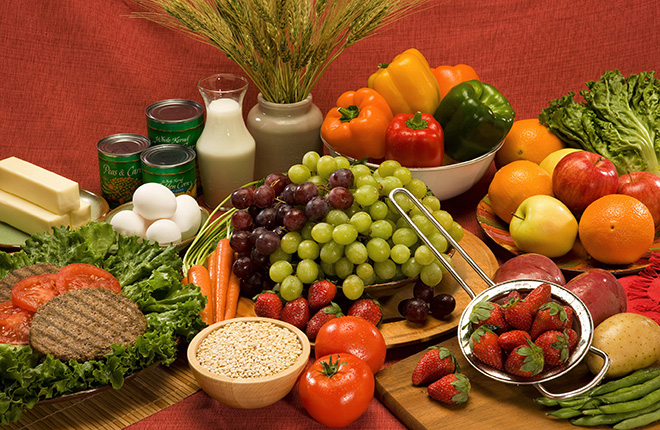Solid Fats and Added Sugars in Foods
Most folks know that becoming a “couch potato” can lead to health problems. But SoFAS can also be problematic. “SoFAS” is a nickname used by some nutritionists for the solid fats and added sugars that are found in selected foods. An analysis of nationally representative U.S. food-consumption data revealed that a surprisingly high proportion of foods consumed contain at least some SoFAS. The study was led by Agricultural Research Service nutritionist Lisa Jahns.
As their names indicate, “solid fats” are solid at room temperature and “added sugars” are those added to foods. These SoFAS are also known as “empty calories,” according to the 2010 Dietary Guidelines for Americans (DGAs), because they provide few or no nutrients, yet are high in calories. While much solid fat is naturally occurring, such as in meat and milk, commercially available food-group options may include SoFAS as ingredients aimed to boost flavor and desirability. For example, peaches canned in heavy syrup have more than three times the sugar of fresh raw peaches.
Significantly, while most non-U.S. food-intake studies do not differentiate between naturally occurring and added sugars, “the United States uses the term ‘added sugars’ to imply the level of control the consumer has over consuming these types of sugars,” write Lisa Jahns and Sibylle Kranz in the March 2014 edition of Nutrition Journal. Jahns is with the ARS Grand Forks Human Nutrition Research Center in North Dakota, and Kranz is with the University of Bristol, U.K.
The study was based on an evaluation of food-intake data from a large sampling of the U.S. population. That data is collected during the national survey known as “What We Eat in America/NHANES.” A limitation of the study is that the analysis was based on self-reported dietary intake data. Survey data of 4,046 foods consumed (2007-2008) was used to estimate the proportion of those foods that contained either solid fats or added sugars from within the major food groups (vegetables, grains, proteins, fruits, and dairy).
The DGAs are science-based federal policy and can be viewed and used through ChooseMyPlate.gov. The study authors wanted to better understand the potential implications of following DGA recommendations in the context of selections from within the food groups.
The researchers found that a high percentage of foods recommended for consumption by the DGAs contained SoFAS, particularly in their commercially available forms. Yet a key recommendation of the DGAs is to reduce the intake of calories from SoFAS.
“These results show that the SoFAS that are in many foods currently being consumed by U.S. residents work against the goal of meeting federal guidelines for limiting SoFAS,” says Jahns. “Looking at the foods people actually eat highlights the intricacies and complexities of the food supply through which consumers must navigate to follow the DGAs. Education about hidden fats and sugars in commonly consumed foods can help consumers to make choices that maximize diet quality while staying within calorie needs.”—By Rosalie Marion Bliss, Agricultural Research Service Information Staff.
“Solid Fats and Added Sugars in Foods” was published in the November 2015 issue of AgResearch Magazine.
Key Facts
- Solid fats and added sugars are referred to as “SoFAS.”
- SoFAS are considered “empty calories.”
- A key dietary recommendation is to reduce the intake of calories from SoFAS.
- Many commercial foods contain SoFAS to boost flavor and appeal.
Full Story







